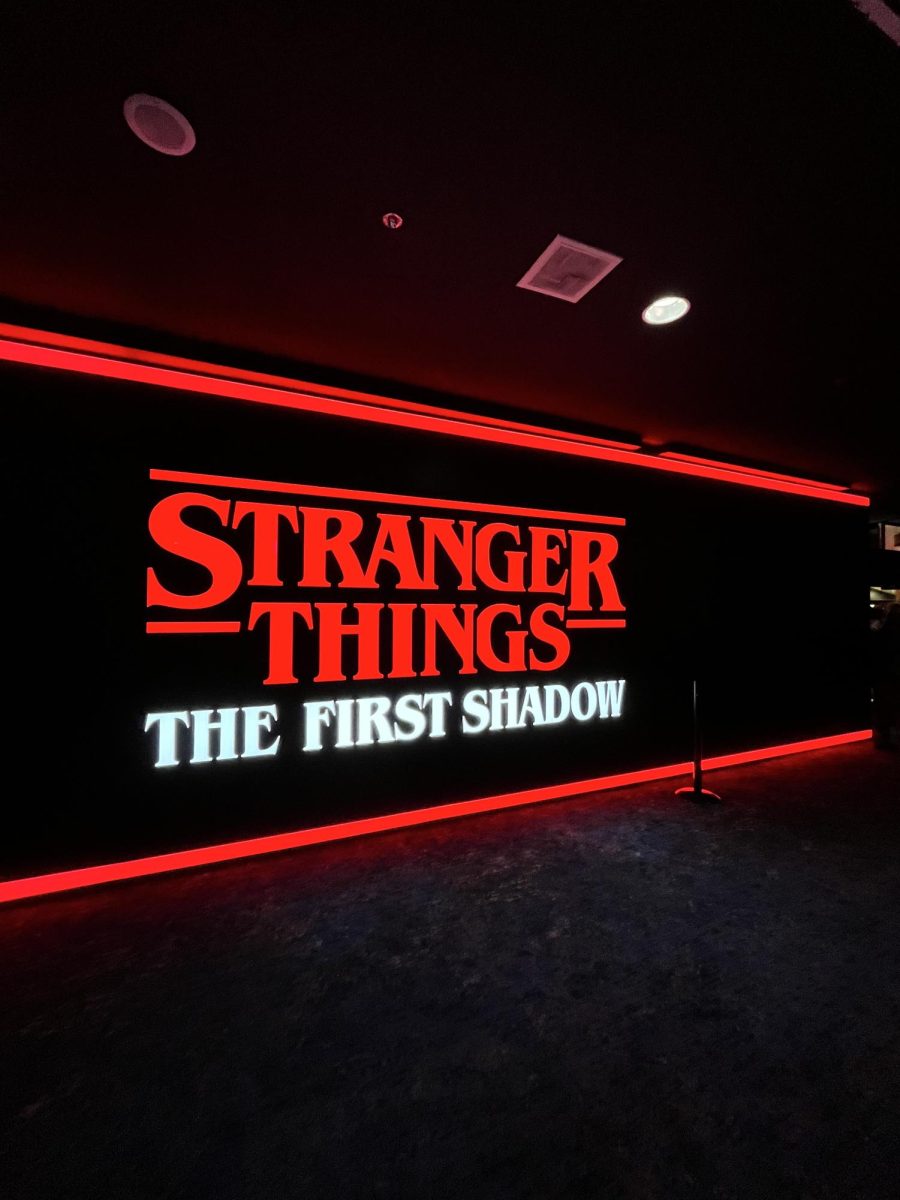In a Broadway season that includes multiple Hollywood A-listers and Oscar winners, it only feels appropriate that these mega-stars be joined by a mega streaming service. Welcome to Broadway, Netflix. Though the company has previous production experience under their belt, Netflix has now installed one of their biggest titles right at the top of the Marriot Marquis in Times Square. “Stranger Things: The First Shadow,” a prequel play by Kate Trefry based on the hit Netflix series, has made its long-awaited transfer from London’s West End.
The play’s opening sequence plunges the audience into the inter-dimensional world of the series. A cold open that depicts a naval experiment gone wrong masterfully takes the audience from an empty ocean to an unknown dimension, with the bow of a massive battleship suddenly materializing center stage. Flashlights flicker, gunshots ring and a few flower-faced creatures feast on the crew. Before you can catch your breath, a blast of smoke fills the auditorium, upon which the iconic series title sequence theme song buzzes through the theater.
There is an abundance of enjoyment to be found in “The First Shadow.”
Jumping ahead to 1959, Henry Creel, played by Louis McCartney, and his family arrive in Hawkins, Indiana. A few other familiar faces from the series are present: a young Joyce Maldonado, Jim Hopper Jr. and Bob Newby round out the scenes at Hawkins High School. Thankfully, the production doesn’t require impressive VFX to keep the story moving. Stephen Daldry and Justin Martin’s direction is able to introduce the characters and world of the play in a skillfully intimate way. New to the lore is Bob’s adopted sister, Patty Newby, played by Gabrielle Nevaeh, the “girl from nowhere” who befriends young Henry.
The audience quickly gathers that Henry is, despite his mother’s affirmations, not a normal kid. After he “accidentally” blinded a boy in Nevada, the Creel family set out for a fresh start. Unfortunately for young Henry, a shadow is not far behind him. Only in his moments with Patty, a relationship much improved and reworked from the West End iteration I saw, do we get to see Henry attempt to be “normal.” These humanizing moments contrast with his nighttime routine, during which he practices his newfound abilities by killing his peers’ pets.
Illusion designers Jamie Harrison and Chris Fisher depict these brutal moments in full, with sound designer Paul Arditti emphasizing the snap of every bone.
These chilling effects offer more than the show’s weaker narrative turns. The B-plot, involving a high school play-within-a-play directed by Joyce, portrayed by Allison Jaye, provides supposed comedic relief, but as the tension and stakes rise for Henry’s story, the scenes feel more redundant. For a nearly three hour play, every scene must feel vital to the story. Unfortunately, Trefry has mainly written for the TV series, a form that differs greatly from a piece of dramatic stagework.
Henry’s story reaches tragic proportions in Act II by introducing the infamous Dr. Brenner, played by Alex Breaux. McCartney, who is reprising his role on Broadway after debuting in the West End production in 2023, delivers a visceral performance as the tormented youth. From delightfully awkward hallway interactions to intense seizures endured in Hawkins National Laboratory, McCartney is the heart of the production. His performance culminates with the design in a thrilling sequence in Act II that includes a gargantuan Mind Flayer puppet descending from the rafters.
While the play supposedly holds a key to the long-anticipated final season of the series, the finished product comes out as a mix of theme park, tragedy and musical in its extensive runtime.
There is an abundance of enjoyment to be found in “The First Shadow.” It is masterfully directed and designed, successfully bringing horror to the stage. Yet, it can’t seem to shake the pressures of a streaming-service-produced play. The fear following an intense jump scare in the play’s final moments is palpable, until it is followed by a gag that features the signature Netflix “Watch Credits” and “Next Episode” option buttons. This eye-rolling bit does not outweigh the beauty found in impressively epic theatre, but it does make me reflect on what this means next for the industry to have a streaming service producing some of the largest-scale productions. Will we have to pay to skip ads during intermission?

